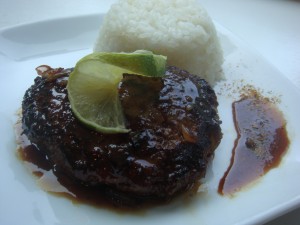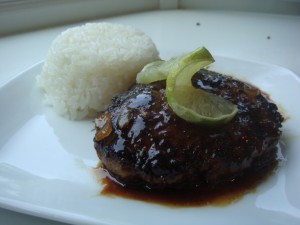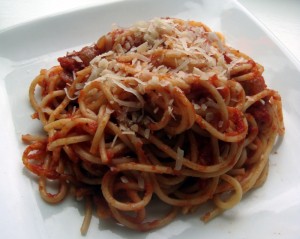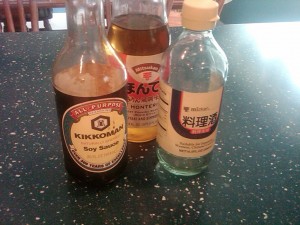My loved ones have been quietly insisting (not quite nagging) that I continue to chronicle my adventures in the world of food, and for all of their rightness — I do so hate it when I’m not in the right, rare as it may be — I simply haven’t had the inclination. I promised updates on DC Restaurant Week which, my lord, was back in August, and failed to deliver. I apologize. They will come… eventually.
I know I’ve commented on this before, but the most peculiar thing about writing, and probably most things in general, is that while I constantly want to write, I often never do unless the act itself is taking the place of something I don’t want to do. As I write this, for example, I should really be fixing up my Georgetown applications (because I’m daft enough to want to go back to graduate school) or at the very least be preparing a new playlist for my iPod. But here I am, blogging for you.
The year is almost over and I will, hopefully, have some things to talk about: my thoughts on my food progress in 2010; my almost vulgar obsession with Nigella Lawson; experiments with my new camera; goals for 2011 (think: macarons!). Until then, my peaches, fiddle with this recipe, which I created when Matt expressed a desire for turkey burgers or Indian food for dinner one night.
There is no picture to accompany it, and its title is pure kitsch and more than likely offensive; in any case, these do taste wonderful and are scrumptiously moist.
Bombay Bao Burger with Cucumber Raita Dressing
Serves 4.
For the Burgers:
1 onion, chopped
1, 1″-knob fresh ginger, peeled and minced
3 cloves garlic, minced
2 serrano peppers, seeded (optional) and minced
1 1/2 tbsp tomato paste
3 1/2 tsp garam masala, divided
1/2 tsp cumin, divided
1/4 tsp fenugreek
1 lb ground turkey
1/2 cup unseasoned bread crumbs
1 egg, lightly beaten
1 tbsp ketchup
1/2 tsp cornstarch
1 tbsp plain, non-fat yogurt
Kosher salt
Vegetable oil
For the Raita Dressing:
1 cucumber, peeled, seeded and chopped
1 cup plain, non-fat yogurt
1 tbsp mayonnaise
1/8 tsp garam masala
Kosher salt
1-2 tsp fresh chopped cilantro or parsley
4 crusty rolls, toasted
4 slices tomato
Romaine lettuce leaves
Place the chopped cucumber in a colander in the sink and liberally sprinkle with kosher salt. Let stand for 20 minutes, until a fair amount of moisture has been drawn out from the cuke.
Heat 1 tbsp of vegetable oil in a nonstick skillet over medium-high heat until the oil is quite hot, almost shimmering. Add the onion, ginger, garlic, and serrano pepper to the pan and saute, stirring occasionally to prevent serious burns, until the onions just begin to color. Stir in tomato paste and cook for one to two minutes more (the tomato paste should lose its vivid redness and begin to brown). Add 2 tsp garam masala, 1/4 tsp cumin, fenugreek, and 1/2 tsp of kosher salt to the pan and stir to coat the veg. Cook for one to two minutes; it should look hideous and glumpy and be very fragrant. Set aside to cool.
Meanwhile, make the raita. Pat dry the cucumber to remove any salty overkill. In a bowl, whisk together yogurt, mayo, garam masala. Stir in the cucumber. Check for seasoning: as the cucumber was already quite heavily salted, you may not need that much salt. Do it to taste: you’ll know it’s properly salted when you can distinctly notice the sweetness of cucumber, the tanginess of yogurt, and the spicy undertones of garam masala. Stir in parsley or cilantro to taste.
In a large bowl, combine ground turkey, cooled onion mixture, egg, bread crumbs, ketchup, cornstarch, yogurt, 1 1/2 tsp garam masala, cumin, and 1/2 tsp of kosher salt. Do not overwork! We want the mixture to be light. Do a patty test: in the pan you fried the onion mixture, place about a teaspoon of the meat mixture and fry until done. Taste the patty and adjust for salt.
Divide the meat mixture into four patties (these are quarter-pounders, baby!). I go for flatter (rather than thick) burgers. They are quite large so, unless your pan is a king of surface area, you may have to do this in batches. Heat a nonstick skillet over medium- to medium-high heat. When the pan is very hot, add 1 tbsp vegetable oil and the patties. They should sizzle. Cook until the bottom of the patty is nice and browned, about 3-4 minutes. Carefully flip patties and cook until the other side is brown.
With pot lid in hand, carefully pour 1/4 cup (you may need more depending on pan size) of the hottest tap water in the pan. Careful! It’ll sizzle and spit! Clamp on the lid and cook over medium heat until most of the water has evaporated, about five minutes. Remove lid, and continue cooking until the pan is pretty much dry, being careful not to let the burgers burn.
Serve on a crusty roll with a slice of tomato, a romaine leaf, and the raita.




